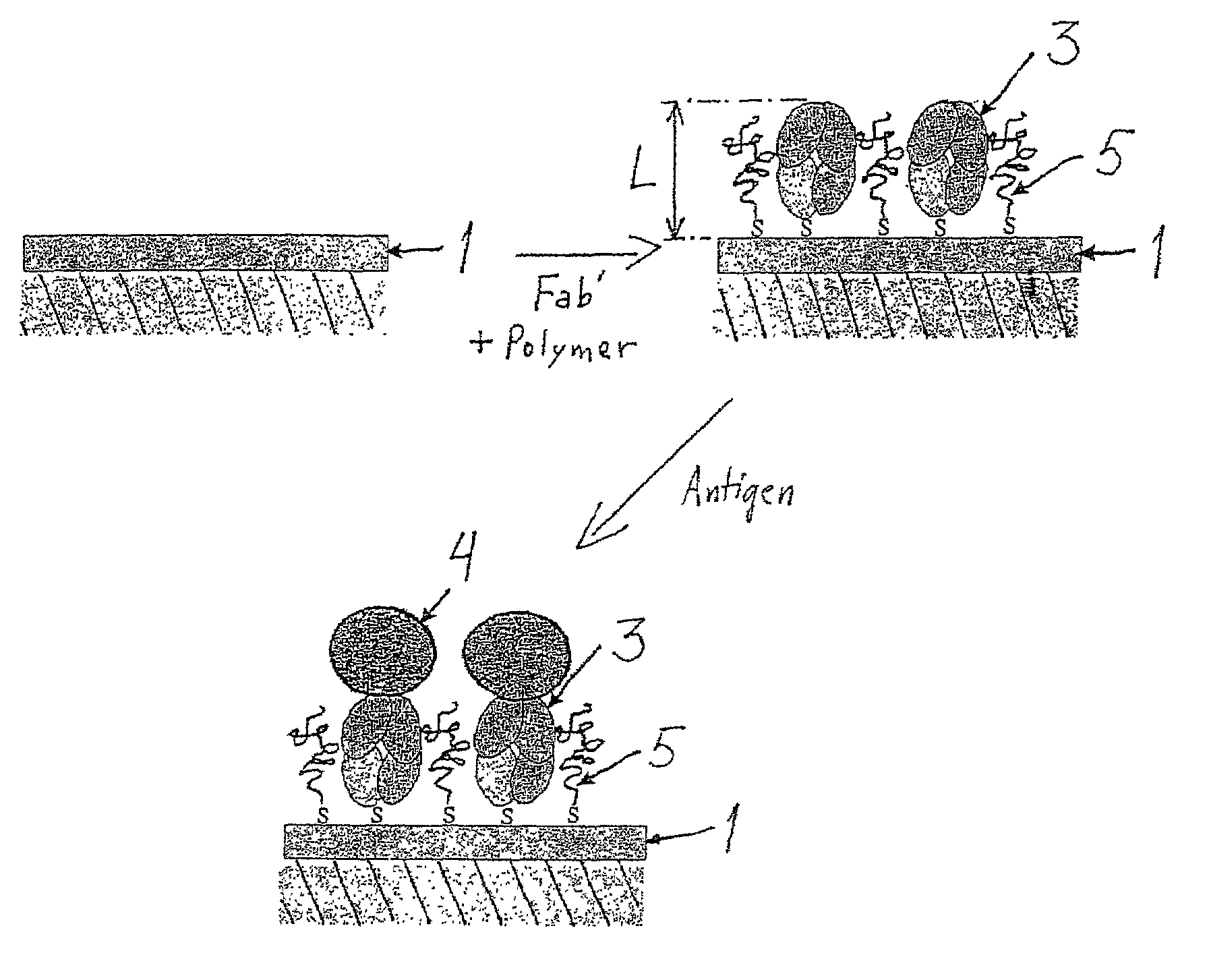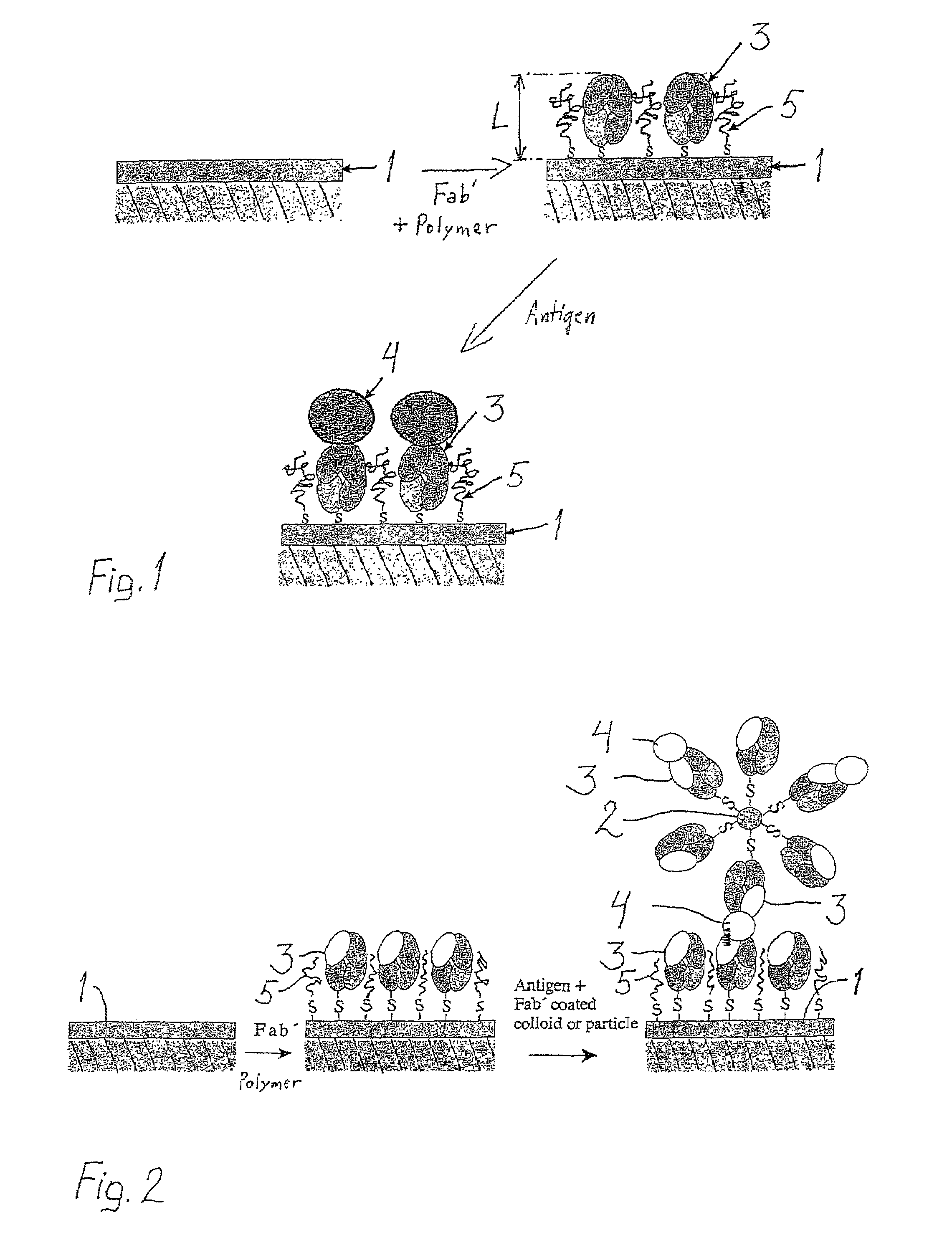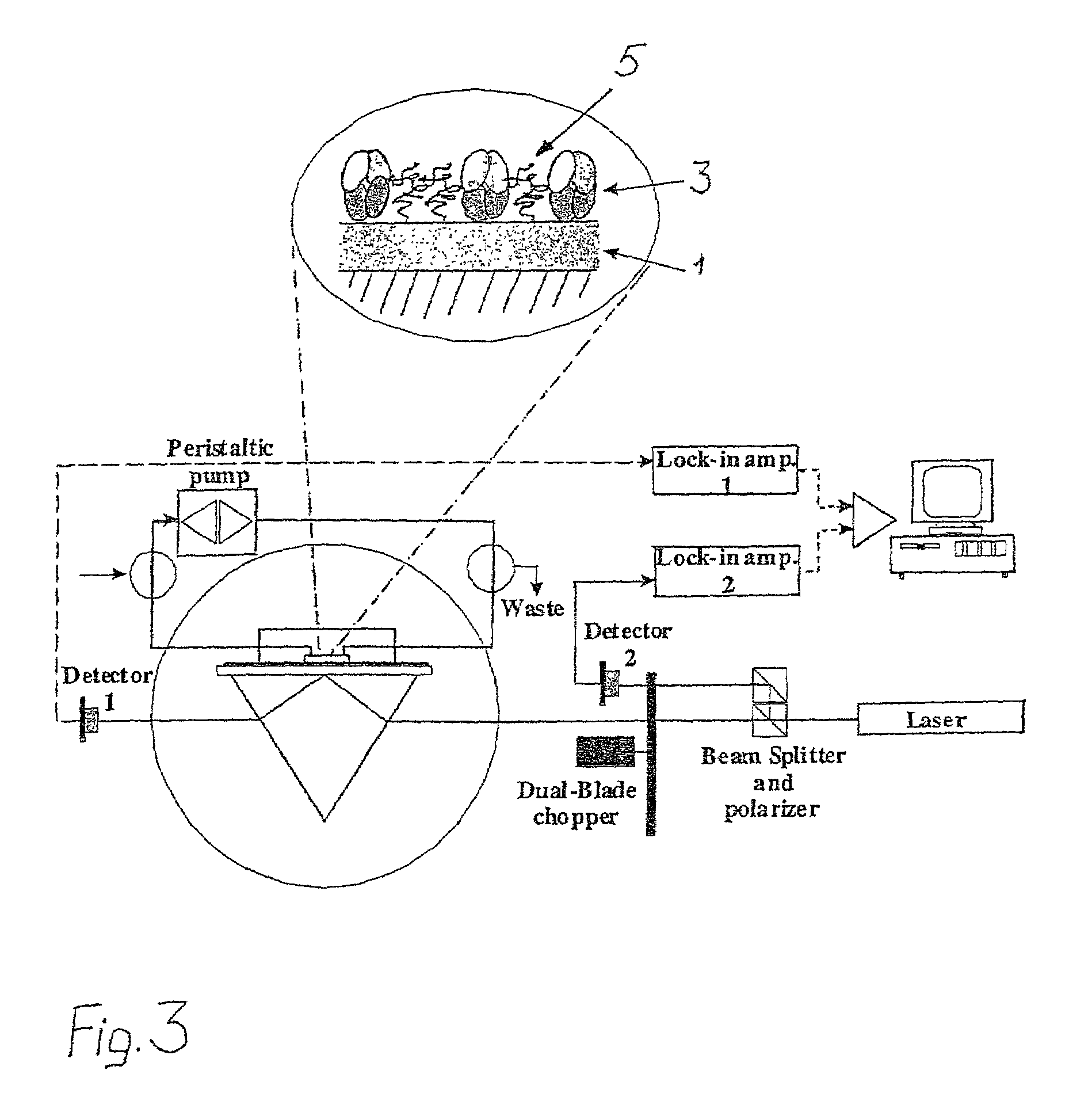Method and biosensor for analysis
a biosensor and analysis method technology, applied in the field of analysis, can solve the problems of high antigen binding, nonspecific binding reduction of biological macromolecules of analytes, etc., and achieve the effect of reducing nonspecific binding and high antigen binding
- Summary
- Abstract
- Description
- Claims
- Application Information
AI Technical Summary
Benefits of technology
Problems solved by technology
Method used
Image
Examples
example 1
[0040]The model antibody was polyclonal goat anti-human F(ab′)2 (Jackson ImmunoResearch, chromatically purified) with minimized cross-reaction to bovine, horse, and mouse serum proteins. The antigen was chromatically purified human IgG (Jackson ImmunoResearch). F(ab′)2 was split into Fab′-fragments with dithiothreitol (DTT, Merck) prior to use as follows: F(ab′)2 with a concentration of 1.2-1.3 mg / ml (100 μl) was mixed with 50 μl of HEPES / EDTA buffer (150 mM NaCl, 10 mM HEPES, 5 mM EDTA, pH=6.0) and 10 μl of a 0.1 M DTT solution in HEPES / EDTA buffer in a microdialysis tube. The dialysis tube was immersed in 250 ml of argon-purged HEPES / EDTA buffer and dialyzed for about 18 h at room temperature under argon. The Fab′-fragment was maintained under argon and used immediately for attachment.
[0041]Fab′-fragments have well-accessible reactive thiol groups opposite the antibody binding domains.
[0042]A Surface Plasmon Resonance device, SPRDEVI was used for the measurements (VTT, Tampere). T...
PUM
| Property | Measurement | Unit |
|---|---|---|
| wavelength | aaaaa | aaaaa |
| pH | aaaaa | aaaaa |
| concentration | aaaaa | aaaaa |
Abstract
Description
Claims
Application Information
 Login to View More
Login to View More - R&D Engineer
- R&D Manager
- IP Professional
- Industry Leading Data Capabilities
- Powerful AI technology
- Patent DNA Extraction
Browse by: Latest US Patents, China's latest patents, Technical Efficacy Thesaurus, Application Domain, Technology Topic, Popular Technical Reports.
© 2024 PatSnap. All rights reserved.Legal|Privacy policy|Modern Slavery Act Transparency Statement|Sitemap|About US| Contact US: help@patsnap.com










